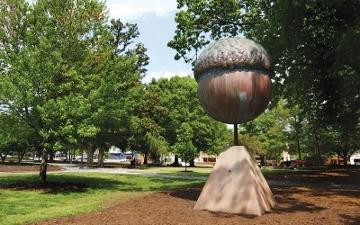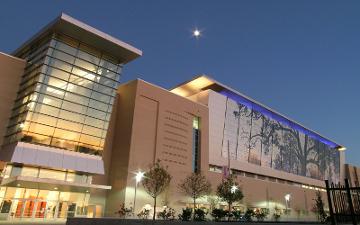
Cartilage Mechanics: Characterization and Computational Modeling
David M. Pierce, David A. Reiter
A multi‐phase material, articular cartilage comprises primarily fluid and electrolytes (68 ‐ 85% by wet weight), proteoglycans (5 ‐ 10% by wet weight), chondrocytes (<0.01% by wet weight), and collagen fibers (15 ‐ 25% by wet weight). The solid phase constitutes an isotropic proteoglycan gel and an anisotropic fiber network of predominantly Type II collagen, both which contribute to mechanical stiffness and fluid permeation. Additionally, proteoglycan aggregates are restrained in the collagen network and contain a large number of negatively charged groups (SO‐ and COO‐). If the total ion concentration inside the tissue is greater than that externally, Donnan osmotic pressure will result in a higher tissue pressure. Given the complex tissue morphology, microstructure and function there are still many unresolved and intriguing problems in cartilage mechanics.
Recent advances in experimental techniques have taken the investigation of cartilage tissue mechanics down to the nanometer scale. Additionally, emerging medical imaging modalities make previously unthinkable biological and structural data available for the study of complex tissues such as cartilage. Critical to these experimental advancements is the incorporation of advanced mathematical and computational models for simulating and characterizing soft tissue response and deformation, e.g., in imaging processing and data analysis. This is also important in the pursuit of more complete biological characterization of cartilage cellular function, characterizing mechano‐sensing and mechano‐transduction. Synergies among fundamental experimental research, new mathematical models and computational methods enable studies of, e.g., fundamental structure‐function relationships, surgical interventions, cartilage and joint integrity, disease progression and engineered cartilage replacements, and provide insight to microphysical (mechanobiological) cellular stimuli.
This Mini‐Symposium focuses on experimental characterization (particularly medical and morphological imaging methods), computational modeling and the potential synergies among these fundamental ingredients, as applied to cartilage in health and disease, and engineered cartilage replacements. The goal in this is to promote cross‐fertilization of ideas and collaborative experimental and numerical efforts towards more rapid progress in advancing the overall field of cartilage research. Emphasis will be placed on novel techniques in mechanical characterization and visualization, microstructure and component imaging; computational modeling at all length scales (molecular, cellular, tissue and joint system levels), remodeling and multi‐scale approaches; and multidisciplinary research approaches that demonstrate successful synergies, e.g., computational reconstruction of experimental findings or experimental and visualization techniques that support validation of computational models.










